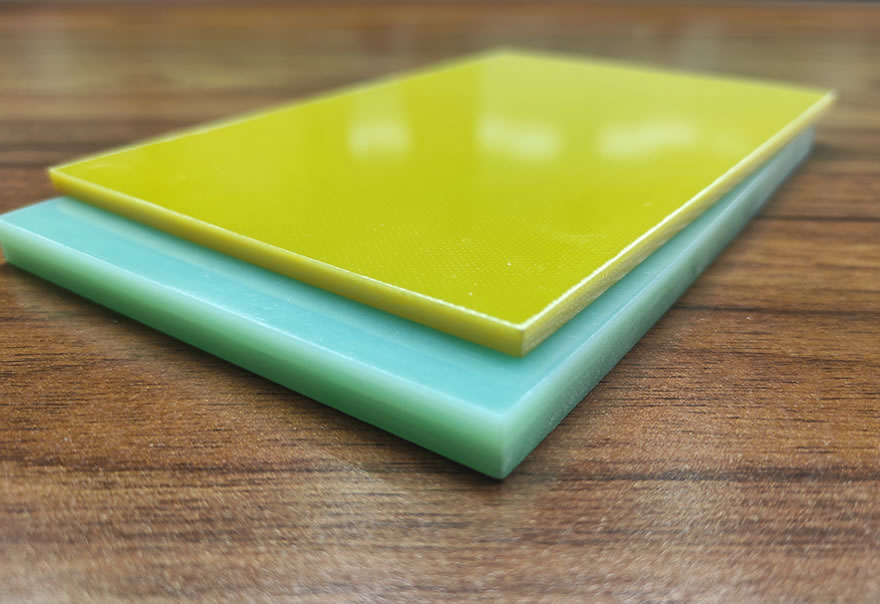Main influencing factors The dielectric strength (or breakdown voltage) of G10 epoxy glass fiber laminate boards is ...
The dielectric strength (or breakdown voltage) of G10 epoxy glass fiber laminate boards is a critical parameter, but it does not have a single fixed value. Its value primarily depends on the following factors:
Board Thickness: This is the most critical factor. Voltage resistance generally increases proportionally with thickness (approximately linear).
Test Method:Short-Time Test: Standard test methods (e.g., ASTM D149 or IEC 60243-1) typically apply a continuously rising voltage at room temperature under dry conditions until breakdown occurs. This is the most common value used for specification.
Step-by-Step Test: Voltage is increased in steps and held for periods.
Long-Term Voltage Resistance: The ability to withstand a voltage lower than the breakdown voltage for an extended period without failure.
Test Conditions: Temperature, humidity, electrode shape/size, and the type of applied voltage (AC or DC) all affect the results (DC breakdown voltage is usually higher than AC).
Material Quality & Manufacturing Process: Resin content, degree of cure, quality of glass fiber cloth, presence of defects like bubbles, impurities, or delamination.
Surface Condition: Surface contamination, scratches, burrs, etc., can significantly reduce voltage resistance.

Dielectric Strength per Unit Thickness: The typical dielectric strength range for G10 is approximately 10 kV/mm to 20 kV/mm.
This is an average range; high-quality, defect-free boards may approach or reach the upper limit.
Actual product datasheets usually provide specific values.
Estimated Values for Specific Thicknesses:
1 mm thick board: Breakdown voltage typically between 10 kV and 20 kV.
3 mm thick board: Breakdown voltage typically 30 kV to 60 kV or higher.
6 mm thick board: Breakdown voltage typically 60 kV to 120 kV or higher.
Design Operating Voltage Must Be Well Below Breakdown Voltage: Under no circumstances should the breakdown voltage be equated with a safe operating voltage! Sufficient safety margins (safety factors) must be incorporated into the design. This factor depends on application criticality, environmental conditions, expected lifespan, etc., and is typically between 2 times to 10 times or even higher. For example, for an actual operating voltage of 5 kV, a material with a nominal breakdown rating of 15 kV to 30 kV+ might be chosen (depending on the required safety factor).
Consult Specific Datasheets: Performance can vary between manufacturers and batches of G10. The most reliable way is to obtain the technical datasheet from your supplier for the specific grade and thickness of board. The datasheet will clearly state the dielectric strength (kV/mm) or the breakdown voltage (kV) for that specific thickness.
Environmental Impact: Voltage resistance decreases significantly in humid, high-temperature, or contaminated environments.
Impact of Machining: Cutting, drilling, grinding, or other machining processes can damage material edges, create carbonization paths, or introduce defects, reducing the local voltage resistance capability.
G10 epoxy board typically has a dielectric strength in the range of 10 kV/mm to 20 kV/mm. For a 1mm thick board, the breakdown voltage is approximately 10-20 kV; for a 3mm thick board, it’s approximately 30-60 kV or higher. The actual design operating voltage must be significantly lower than these values, with ample safety margins applied. Always rely on the technical datasheet provided by the supplier of your specific material.
When selecting G10 material for high-voltage insulation, always choose the thickness and grade based on the most severe operating conditions and the required high safety factor.
If you are interested in our products,, please send us a message and we will contact you as soon as we receive it. Email: info@ztaero.com whatsApp: +8616650273778